#triton mosaic
Photo



Triton Mosaic (1st version) T-Shirt / V-Neck / Tank Top design. Available on Amazon and Redbubble (onelink): http://geni.us/tritonmosaic
This design was inspired by a 2000-year-old Triton mosaic found in Spain. The mosaic is currently on display at the Cadiz Museum.
Triton was a merman in Greek mythology, messenger god of the sea and son of Poseidon and Amphitrite. He had a conch shell which he used as a trumpet in order to tame the waves to his volition.
10 notes
·
View notes
Text
The Great British Blorbo Off Begins Shortly....
Thanks everyone for waiting so patiently while I take my time sorting this all out! I'm pleased to announce that I've decided on everyone that will be in the tournament, and we will be starting next Monday (16th)! So, here's how it's going to work:
There are 128 characters overall, and I have split them into 4 brackets with two rounds each.
I will be posting 8 polls (1 round) a week, and will reblog them in the middle of the week and at the end of the week.
Once we get down to one character left from each bracket, they will go against each other in semifinals until only two are left.
Winner becomes the new queen of England <3
If anyone that submitted a character has a specific image of them they'd like me to use, feel free to send it over. If you've submitted a character from a book then I will just be using the front cover of the book they're from as their image, so let me know if there's a TV/film version or certain cover you'd like!
Brackets are below the cut! As always, feel free to send an ask if you're confused about anything :)
(Also let me know if there's any repeated characters or errors, had a few formatting issues before uploading so I apolgise if anything is messed up)
BRACKET 1:
Round 1:
Miss Jane Marple (Miss Marple) vs Lucy Pevensie (The Chronicles of Narnia)
Austin Powers (Austin Powers) vs Jade (Dragon Quest XI: Echoes of an Elusive Age)
Dudley (Street Fighter) vs Daisy Steiner (Spaced)
Danger Mouse (Danger Mouse) vs Lady Penelope (Thunderbirds)
Malcolm Reed (Star Trek: Enterprise) vs James Bond (James Bond)
Archie MacDonald (Monarch of the Glen) Vs Lemon (Bullet Train)
Edward Hyde (The Glass Scientists) Vs Maurice Moss (The IT Crowd)
David Ward (I Am In Eskew) Vs Arthur Dent (A Hitchhiker’s Guide to the Galaxy)
Round 2:
Gordon the Big Engine (Thomas and Friends) Vs Gary 'Eggsy' Unwin (Kingsman)
Walter Heath (The White Vault) Vs Rupert Giles (Buffy the Vampire Slayer)
Skull (Lockwood and Co) Vs Jeremy Usborne (Peep Show)
Matthew Vandham (Xenoblade Chronicles 3) Vs Raihan (Pokemon Sword and Shield)
Diana Cavendish (Little Witch Academia) Vs Katherine 'Kitty' Higham (Ghosts)
Leo Fitz (Agents of Shield) Vs John Constantine (DC Comics)
Gnomeo (Gnomeo and Juliet) Vs Bertie Wooster (Jeeves and Wooster)
Jamie Fraser (Outlander) Vs Lexie McTavish (Monarch of the Glen)
BRACKET 2:
Round 1:
Jonathan Sims (The Magus Archives) Vs Laszlo Cravensworth (What We Do in the Shadows)
Nia (Xenoblade Chronicles 2) Vs Daisy (Downton Abbey)
Gwen Cooper (Torchwood) Vs Arthur Lester (Malevolent)
Robert (Genki Elementary Japanese) Vs Aled Last (Osemanverse)
Rose Tyler (Doctor Who) Vs Avril Bradley (Gosick)
Newt (The Maze Runner) Vs Jacob Frye (Assassin’s Creed Syndicate)
Captain Hastings (Hercule Poirot) Vs Lynda Day (Press Gang)
Amelia Hughes (Infinity Train) Vs Heathcliff (Limbus Company)
Round 2:
Alice Cartelet (Kin-iro Mosaic) Vs Billy Kane (Fatal Fury)
Ropafadzo "Ropa” Moyo (Edinburgh Nights) Vs Steve Fox (Tekken)
Alex Rider (Alex Rider) Vs Pietre Carvel/Arby (Utopia)
Professor Layton (Professor Layton Series) Vs Robert EO Speedwagon (JoJo’s Bizarre Adventure)
Bede (Pokemon Sword and Shield) Vs Ferb Fletcher (Phineas and Ferb)
Jessica Albert (Dragon Quest VIII: Journey of the Cursed King) Vs Dirk Gently (Dirk Gently’s Hollistic Detective Agency)
Jo Grant (Doctor Who) Vs Evelyn Carnahan (The Mummy)
The Last Constable (Fallen London) Vs Edmund Pevensie (The Chronicles of Narnia)
BRACKET 3:
Round 1:
Tangerine (Bullet Train) Vs Sherlock Holmes (Sherlock Holmes)
Red Guy (Don’t Hug Me I’m Scared) Vs Paddington (Paddington)
Cuno (Disco Elysium) Vs Luke Triton (Professor Layton Series)
Hobie Brown (Spiderman: Across the Spiderverse) Vs Robin Hood (English Folk Legend)
Mary Sera (Detective Conan) Vs Emma (Emma: A Victorian Romance)
Jay Cartwright (The Inbetweeners) Vs Shellington (Octonauts)
Noone (The Sound of Nightmares) Vs Matthew Crowley (Downton Abbey)
Balthazar Cavendish (Milo Murphy’s Law) Vs Cammy White (Street Fighter)
Round 2:
Horrid Henry (Horrid Henry) Vs Ivor the Engine (Ivor the Engine)
Tim Bisley (Spaced) Vs Ignis Scientia (Final Fantasy XV)
Axl Low (Guilty Gear) Vs Elizabeth Bennet (Pride and Prejudice)
Marnie (Pokemon Sword and Shield) Vs Morrigan Aensland (Darkstalkers)
Mason Greyback (Wizards of Waverly Place) Vs Clarice Bean (Clarice Bean)
Agatha Christie (Bungou Stray Dogs) Vs Gromit (Wallace and Gromit)
Lila Pitts (The Umbrella Academy) Vs Mina Harker (Dracula)
Kieren Walker (In the Flesh) Vs Thomas the Tank Engine (Thomas and Friends)
BRACKET 4:
Round 1:
Peppa Pig (Peppa Pig) Vs Martin K Blackwood (The Magnus Archives)
Mary Poppins (Mary Poppins) Vs Tahani Al-Jamil (The Good Place)
Alec Hardy (Broadchurch) Vs Thomas Nightingale (Rivers of London)
Hammer/Hannah (Fable 2) Vs Anthony Lockwood (Lockwood & Co)
Iris Wilson (The Great Ace Attorney Chronicles) Vs Miss Eliza Scarlet (Miss Scarlet and the Duke)
Karen Kujou (Kin-iro Mosaic) Vs Marrick Tremayne (The Bedlam Stacks)
The Ninth Doctor (Doctor Who) Vs Jonathan Harker (Dracula)
Alfred Pennyworth (Batman) Vs Mr Darcy (Pride and Prejudice)
Round 2:
Hugh Anthony Disward (The Mystic Archives of Dantalian) Vs Nathan Young (Misfits)
William "Duke" Wellington (Miss Scarlet and the Duke) Vs George (The Famous Five)
Jonathan Joestar (JoJo’s Bizarre Adventure) Vs Dio Brando (JoJo’s Bizarre Adventure)
Julian Bashir (Star Trek: Deep Space 9) Vs Tori Spring (Osemanverse)
Winston Smith (1984) Vs Strangelove (Metal Gear Solid)
Wheatley (Portal 2) Vs Herlock Sholmes (The Great Ace Attorney Chronicles)
Lucy Carlyle (Lockwood & Co) Vs Wallace (Wallace and Gromit)
Mr Blobby (Noel’s House Party) Vs Tracy Beaker (The Story of Tracy Beaker)
#polls#tournament poll#tournament bracket#uk#tournament#i'm not tagging every fandom but feel free to reblog and recruit your fellow fandomers
98 notes
·
View notes
Photo
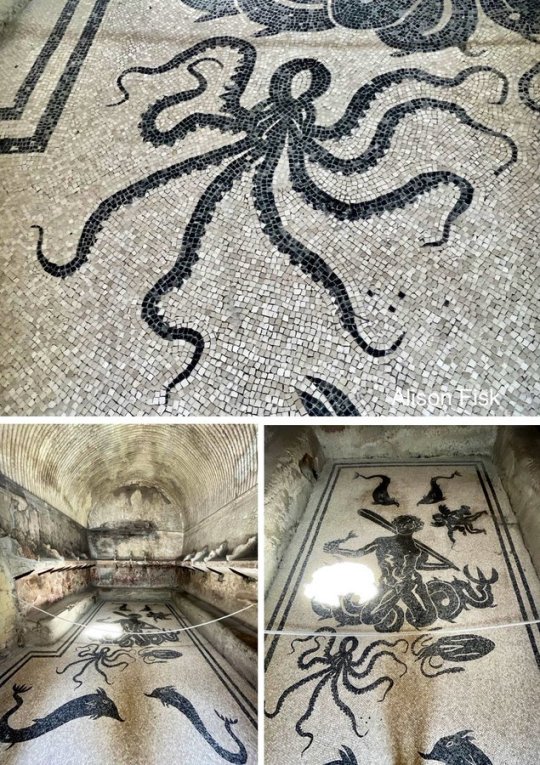
Spectacular black and white mosaic floor in the women’s changing room at the central baths, ancient Herculanium. Triton with dolphins, cherub, octopus and cuttlefish.
54 notes
·
View notes
Text
Goatboater ipa rainy daze

GOATBOATER IPA RAINY DAZE PLUS
Lost to Prohibition and recently resurrected, this has once again become a popular style of beer across the Bluegrass state and beyond.Īmerican Lager Parleaux Beer Lab Lemony Sippit Lager The Kentucky common was a once popular recipe that originated in the Louisville, Kentucky area. With an “imperial” twist, this milk stout really packs a punch!Īmber Lager Dreaming Creek Brewery 1792 Kentucky Common Named by the brewer’s child, Poke the Bear is a tasty milk stout with notes of chocolate and vanilla. Roasted coffee and chocolate bitterness balance its smooth malty sweetness. “I like big stouts and I cannot lie.” Exile Brewing’s mocha stout is brewed with Brazilian coffee beans from their neighbors up the street, Horizon Line. The golden color, white head and crisp flavor will satisfy any wheat lovers cravings.Ĭoffee Beer Exile Brewing Company Sir Moch-A-Lot Mocha Stout This American wheat ale is a 2017 Great American Beer Festival bronze medal winner from Indiana. Paired with the sweetness from lactose, this is chocolate-y brew!Īmerican IPA Corridor Brewery Wizard Fight American IPAĬorridor Brewery’s flagship beer that features a plethora of cool kid hops including Mosaic, Citra, and El Dorado create a citrus and tropical paradise.Īmerican Wheat Triton Brewing Co.
GOATBOATER IPA RAINY DAZE PLUS
Instead of a commonly thought of coconut dark beer, this German-style coconut hefeweizen is a lighter-bodied beer inspired by one Honolulu Beer Works brewer’s wife.Ĭhocolate Beer Boise Brewing Dark Daisy Chocolate Milk Stoutīoise Brewing uses two different types of chocolate malt plus a touch or roast to get the dark chocolate character. This recipe was the third turn of their brewhouse and is dry-hopped, abundantly so, with citra hops! Holy Spin American IPAĭubbed the Holy Spin, the third spin of a vinyl record is known to be when the tunes are at their best. This dark roasted sweet stout is heavy in body and color but light in its mouthfeel thanks to rolled oats and lactose, providing an underlying sweetness that is sure to make your dreams come true.Īmerican IPA Perfect Plain Brewing Co. Oatmeal Stout Crooked Hammock Brewery Haulin’ Oats Milk Stout Imagining these farms beers were brewed with a variety of surplus grains, Two Roads Brewing crafted this saison with a blend of grains for a subtle complexity. This beer is named for the concept of compensating migrant farm workers of yore with beer as part of their pay. Only the highest quality beers were taxed 90 shillings in the old Scottish taxing system! You’ll find this amber ale brilliantly refreshing and worth every shilling.īelgian Ale Two Roads Brewing Co. La Grisette is a thirst-quenching Belgian farmhouse ale akin to saison, which earned Ladyface Ale Companie a silver in the 2018 Las Angeles International Beer Competition.Īmber Ale Odell Brewing Company 90 Shilling Ale The perfectly timed hop additions makes it a light, dry and very refreshing homebrew.īelgian Ale Ladyface Ale Companie La Grisette brews this tradiational Belgian golden with pilsen malt and noble hops that lend aromas of apples and pears. This blonde ale is brewed with pilsner and wheat malts, hopped with American and European hops and fermented with lager yeast at warm ale temperatures.īelgian Ale Pedal Haus Brewery Biere Blanche Belgian WitbierĪ gold medal winner in the 2018 Great American Beer Festival, this traditional witbier from Pedal Haus Brewery features Moraccan orange peel and coriander.īelgian Ale Ozark Beer Co. Mother Ale is the lightest of Denali Brewing’s lineup of signature ales. Truck Stop Honey is Back Forty Beer Company’s flagship which won a Great American Beer Festival silver medal the same year it debuted in 2011! The wildflower honey gives this close to traditional English brown ale a slightly sweet finish.īlonde Ale Denali Brewing Co.

0 notes
Photo

Archaeological Museum of Patra:
Mosaic floor with a scene of Triton
Mosaic floor from a Roman urban villa found in Patras. Part of the mosaic was destroyed by a twin grave of the Late Roman Times.
Triton, who is riding a seahorse is depicted in the centre. The scene is surrounded by guilloche pattern and black linear geometric decoration, which consists of a system of triangles and squares, forming octagons.
Dated to the 3rd cent. A.D
What always astounds me is the high level of craftmanship, in these rather average works of art. These representations exciting as they are for their use of color, pattern and scene, they are not masterpieces. They are not famous, or commemorated in surviving literary sources and they are pretty common and ample in well-off residences.
The more advanced works of mosaic include the use of tesserae (tiles) of varying sizes to better define areas of detail such as the features of a face, and flow within the work, not just by following the shape of the described object, but by creating vivid lines of expression that further enhance the pictorial aspect of the mosaic.
Another interesting side of them is the existence of a certain visual glossary. Like in this instance the horse and the fish tail of the Triton are colored in such a way that conveys a glistening, fish like texture. And even more interesting is how often volume is created by variation of color, rather than chiaroscuro shading.
Details:


Bonus: The original photo - as you can see the light is pretty dim.

The red coloration on white is usually a tinge from the soil, where the mosaic was buried under, but there is also some variation of light temperature from the different spotlights that light the exhibit - some of them are older, or have varying types of lightbulbs, which makes restoring the white balance a particularly painstaking process.
A lot of the mosaics in Patra seem also slightly faded, which might be damaged glaze at the top of the tile, and other time related damage. To restore some of the color I use as a guide better-preserved, and better-lighted mosaics exhibited in other museums such as these ones - which are also a favorite collection of mine.
So buy this photographer a drink: https://ko-fi.com/isabia
#mosaics#tagamemnon#archaeology#greek museums#ancient greece#greece#greco roman art#ancient art#ancient greek mosaics#ancient mosaic#greek roman period#greco roman studies#classical studies#ancient painting#triton#seahorse#archaeological museum of patra#patra#achaia#peloponnese#photography
157 notes
·
View notes
Text
Trident
Trident. The third pattern in my eBook, More in the Ocean.
I almost didn’t publish this pattern. My first few drafts were just dreadful. And then when I thought I managed to get it right I’d show someone and they would point out this or that and no matter how kind they were it was starting to really wear me down.
I have other drafts of patterns that have discouraged me and will never see the light of day. I am glad I decided to free this guy. My husband…

View On WordPress
#Crochet#etsy#Interlocking Crochet#king triton#little mermaid#merman#Mosaic Crochet#neptune#ocean#ravelry
0 notes
Photo

Mosaic depicting Poseidon/Neptune and Amphitrite in a wedding chariot pulled by Tritons. From building IX.2.27, Pompeii; now in the National Archaeological Museum, Naples.
#classics#tagamemnon#Ancient Rome#Roman Empire#Pompeii#art#art history#ancient art#Roman art#mosaic#classical mythology#Hellenic polytheism#religio Romana#Roman religion#Poseidon#Neptune#Amphitrite#Triton#NAM Naples
1K notes
·
View notes
Text
I Didn’t Ask To Be A Hero Seeking Praise
Chapter 7: Percy Says Uno Reverse Those Bitches’ Plan
When Percy had told Annabeth he had an idea in mind for Estelle’s gift, she probably wouldn’t have guessed that Percy meant he was going to steal something from his father’s underwater palace. Honestly, it’s not that big of a deal. He’s already taken a piece of coral from there and gave it to Annabeth. As long as he doesn’t run into his father or Triton, Percy would call his little debt collection a success.
Luckily, Percy did not run into either of the gods when he made his quick, secret visit. Bad news, a shortfin mako shark did see Percy pluck a Tahitian pearl from a mosaic on the outside wall and was likely to snitch on him. Stupid marine life and their gossiping tendencies.
“I swear, if you tell anyone about what you saw me do, I’ll find you and do something,” Percy threatened. “I don’t know what that something is but it will be annoying.” Apparently, Percy was not good at threatening sharks because this one just scoffed at him and swam away. Percy may or may not be getting a visit from Poseidon soon. Splendid.
With his debt collection done, Percy made his way back up to shore. Unfortunately, he had to make his way back to the Avengers compound. Can Percy get a hell yeah for risking his life for the greater good?
Percy gave a loud whistle and waited. A dark mass quickly approached from above, and Blackjack made his presence known by immediately asking for doughnuts. Hey, boss! I know you have somewhere to be, but I saw this really cool bakery on my way here. Can we stop there? Stroking Blackjack’s mane, Percy gave his answer and also informed the pegasus of another pitstop they had to make before heading to the compound.
Soon enough Percy was landing in front of a very shocked Peter Parker. You tell a kid one time that Greek mythology is real and yet his mind is still blown every time he encounters something from it.
Continue reading on AO3
#i didn’t ask to be a hero seeking praise#percy jackson#pjo#percy jackson and the olympians#hoo#heroes of olympus#pjo/hoo#pjato#pjo fanfic#hoo fanfic#pjo fanfiction#hoo fanfiction#percy jackson fanfic#pjoverse#riordanverse#tony stark#natasha romanoff#peter parker#marvel#mcu#avengers#marvel fanfiction#mcu fanfiction#avengers fanfiction#spiderman#iron man#black widow#skys post
9 notes
·
View notes
Photo
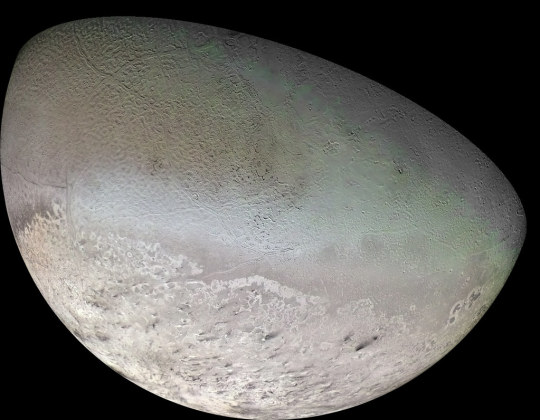
Global Color Mosaic of Triton by NASA on The Commons
187 notes
·
View notes
Photo

Did you know our Spellbound series are made from platinum silicone and start at $800? Which design do you prefer? The left or the right? The left is the Sirena design and the right is the Triton design. Please note design means the shape of the tail, not the color(s). Each tail is made to order in your measurements and color choices! Order yours today www.mertailor.com and follow @mertailor for daily mermaid tail photos! #mertailor #spellbound #mermaidtail #mermaid #merman #silicone #sirena #triton #siren #mosaic #travel #dreamsdocometrue #photography #unicorn #dragon #summeriscoming #swimming #realfish #fishscales #specialfx #platinum #mermaidlife #mermaidvibes
#mosaic#mermaidtail#fishscales#platinum#mertailor#triton#photography#unicorn#spellbound#mermaidlife#dreamsdocometrue#mermaidvibes#mermaid#merman#dragon#swimming#summeriscoming#realfish#sirena#specialfx#travel#siren#silicone
43 notes
·
View notes
Photo
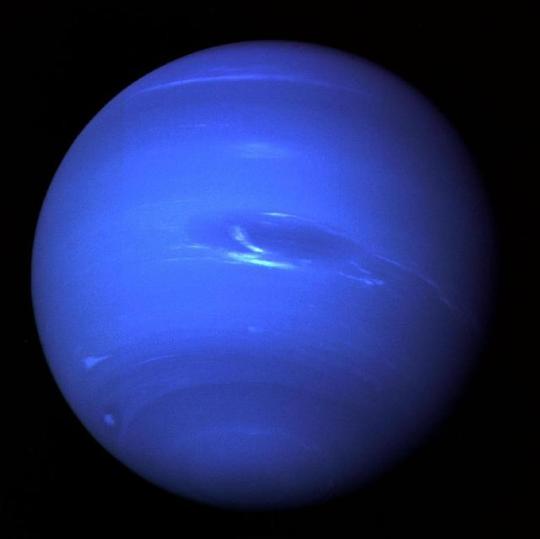
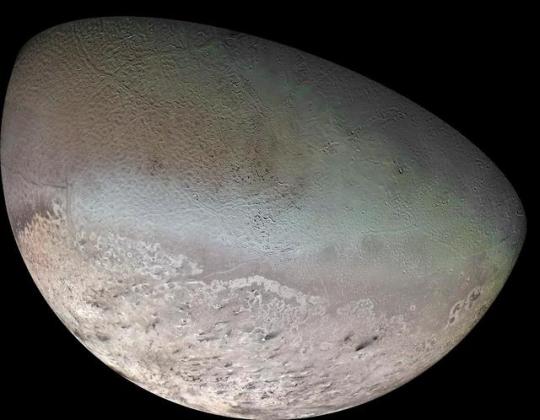
30 YEARS AGO: VOYAGER 2’S HISTORIC NEPTUNE FLYBY Thirty years ago, on Aug. 25, 1989, NASA’s Voyager 2 spacecraft made a close flyby of Neptune, giving humanity its first close-up of our solar system’s eighth planet. Marking the end of the Voyager mission’s Grand Tour of the solar system’s four giant planets -- Jupiter, Saturn, Uranus and Neptune -- that first was also a last: No other spacecraft has visited Neptune since. “The Voyager planetary program really was an opportunity to show the public what science is all about,” said Ed Stone, Voyager’s project scientist since 1975. “Every day we learned something new.” Wrapped in teal- and cobalt-colored bands of clouds, the planet that Voyager 2 revealed looked like a blue-hued sibling to Jupiter and Saturn, the blue indicating the presence of methane. A massive, slate-colored storm was dubbed the “Great Dark Spot,” similar to Jupiter’s Great Red Spot. Six new moons and four rings were discovered. During the encounter, the engineering team carefully changed the probe’s direction and speed so that it could do a close flyby of the planet’s largest moon, Triton. The flyby showed evidence of geologically young surfaces and active geysers spewing material skyward. This indicated that Triton was not simply a solid ball of ice, even though it had the lowest surface temperature of any natural body observed by Voyager: minus 391 degrees Fahrenheit (minus 235 degrees Celsius). The conclusion of the Neptune flyby marked the beginning of the Voyager Interstellar Mission, which continues today, 42 years after launch. Voyager 2 and its twin, Voyager 1 (which had also flown by Jupiter and Saturn), continue to send back dispatches from the outer reaches of our solar system. At the time of the Neptune encounter, Voyager 2 was about 2.9 billion miles (4.7 billion kilometers) from Earth; today it is 11 billion miles (18 billion kilometers) from us. The faster-moving Voyager 1 is 13 billion miles (21 billion kilometers) from Earth. Getting There By the time Voyager 2 reached Neptune, the Voyager mission team had completed five planetary encounters. But the big blue planet still posed unique challenges. About 30 times farther from the Sun than Earth is, the icy giant receives only about 0.001 times the amount of sunlight that Earth does. In such low light, Voyager 2’s camera required longer exposures to get quality images. But because the spacecraft would reach a maximum speed of about 60,000 mph (90,000 kph) relative to Earth, a long exposure time would make the image blurry. (Imagine trying to take a picture of a roadside sign from the window of a speeding car.) So the team programmed Voyager 2’s thrusters to fire gently during the close approach, rotating the spacecraft to keep the camera focused on its target without interrupting the spacecraft’s overall speed and direction. The probe’s great distance also meant that by the time radio signals from Voyager 2 reached Earth, they were weaker than those of other flybys. But the spacecraft had the advantage of time: The Voyagers communicate with Earth via the Deep Space Network, or DSN, which utilizes radio antennas at sites in Madrid, Spain; Canberra, Australia; and Goldstone, California. During Voyager 2’s Uranus encounter in 1986, the three largest DSN antennas were 64-meters (210 feet) wide. To assist with the Neptune encounter, the DSN expanded the dishes to 70 meters (230 feet). They also included nearby non-DSN antennas to collect data, including another 64-meter (210 feet) dish in Parkes, Australia, and multiple 25-meter (82 feet) antennas at the Very Large Array in New Mexico. The effort ensured that engineers could hear Voyager loud and clear. It also increased how much data could be sent back to Earth in a given period, enabling the spacecraft to send back more pictures from the flyby. Being There In the week leading up to that August 1989 close encounter, the atmosphere was electric at NASA’s Jet Propulsion Laboratory in Pasadena, California, which manages the Voyager mission. As images taken by Voyager 2 during its Neptune approach made the four-hour journey to Earth, Voyager team members would crowd around computer monitors around the Lab to see. “One of the things that made the Voyager planetary encounters different from missions today is that there was no internet that would have allowed the whole team and the whole world to see the pictures at the same time,” Stone said. “The images were available in real time at a limited number of locations.” But the team was committed to giving the public updates as quickly as possible, so from Aug. 21 to Aug. 29, they would share their discoveries with the world during daily press conferences. On Aug. 24, a program called “Voyager All Night” broadcast regular updates from the probe’s closest encounter with the planet, which took place at 4 a.m. GMT (9 p.m. in California on Aug. 24). The next morning, Vice President Dan Quayle visited the Lab to commend the Voyager team. That night, Chuck Berry, whose song “Johnny B. Goode” was included on the Golden Record that flew with both Voyagers, played at JPL’s celebration of the feat. Of course, the Voyagers’ achievements extend far beyond that historic week three decades ago. Both probes have now entered interstellar space after exiting the heliosphere -- the protective bubble around the planets created by a high-speed flow of particles and magnetic fields spewed outward by our Sun. They are reporting back to Earth on the “weather” and conditions from this region filled with the debris from stars that exploded elsewhere in our galaxy. They have taken humanity’s first tenuous step into the cosmic ocean where no other operating probes have flown. Voyager data also complement other missions, including NASA’s Interstellar Boundary Explorer (IBEX), which is remotely sensing that boundary where particles from our Sun collide with material from the rest of the galaxy. And NASA is preparing the Interstellar Mapping and Acceleration Probe (IMAP), due to launch in 2024, to capitalize on Voyager observations. The Voyagers send their findings back to DSN antennas with 13-watt transmitters -- about enough power to run a refrigerator light bulb. “Every day they travel somewhere that human probes have never been before,” said Stone. “Forty-two years after launch, and they’re still exploring.” TOP IMAGE....This picture of Neptune was produced from the last whole planet images taken through the green and orange filters on the Voyager 2 narrow angle camera. The images were taken at a range of 4.4 million miles from the planet, 4 days and 20 hours before closest approach. The picture shows the Great Dark Spot and its companion bright smudge; on the west limb the fast moving bright feature called Scooter and the little dark spot are visible. These clouds were seen to persist for as long as Voyager's cameras could resolve them. North of these, a bright cloud band similar to the south polar streak may be seen. The Voyager Mission is conducted by JPL for NASA's Office of Space Science and Applications. LOWER IMAGE....Global color mosaic of Triton, taken in 1989 by Voyager 2 during its flyby of the Neptune system. Color was synthesized by combining high-resolution images taken through orange, violet, and ultraviolet filters; these images were displayed as red, green, and blue images and combined to create this color version. With a radius of 1,350 (839 mi), about 22% smaller than Earth's moon, Triton is by far the largest satellite of Neptune. It is one of only three objects in the Solar System known to have a nitrogen-dominated atmosphere (the others are Earth and Saturn's giant moon, Titan). Triton has the coldest surface known anywhere in the Solar System (38 K, about -391 degrees Fahrenheit); it is so cold that most of Triton's nitrogen is condensed as frost, making it the only satellite in the Solar System known to have a surface made mainly of nitrogen ice. The pinkish deposits constitute a vast south polar cap believed to contain methane ice, which would have reacted under sunlight to form pink or red compounds. The dark streaks overlying these pink ices are believed to be an icy and perhaps carbonaceous dust deposited from huge geyser-like plumes, some of which were found to be active during the Voyager 2 flyby. The bluish-green band visible in this image extends all the way around Triton near the equator; it may consist of relatively fresh nitrogen frost deposits. The greenish areas includes what is called the cantaloupe terrain, whose origin is unknown, and a set of "cryovolcanic" landscapes apparently produced by icy-cold liquids (now frozen) erupted from Triton's interior.
240 notes
·
View notes
Photo

(via Roman mosaic of a triton wrangling a sea monster, excavated from an octagonal room in the summer baths at the river port city of Ocriculum (Umbria, Italy), which was renowned for its export of olive oil. 3rd century CE, Museo Pio-Clementino, Vatican City. : MosaicPorn)
3 notes
·
View notes
Text
30 Years Ago: Voyager 2's Historic Neptune Flyby
NASA - Voyager 1 & 2 Mission patch.
Aug. 22, 2019
Image above: This picture of Neptune was taken by Voyager 2 less than five days before the probe's closest approach of the planet on Aug. 25, 1989. The picture shows the "Great Dark Spot" — a storm in Neptune's atmosphere — and the bright, light-blue smudge of clouds that accompanies the storm. Image Credits: NASA/JPL-Caltech.
Thirty years ago, on Aug. 25, 1989, NASA's Voyager 2 spacecraft made a close flyby of Neptune, giving humanity its first close-up of our solar system's eighth planet. Marking the end of the Voyager mission's Grand Tour of the solar system's four giant planets — Jupiter, Saturn, Uranus and Neptune — that first was also a last: No other spacecraft has visited Neptune since.
"The Voyager planetary program really was an opportunity to show the public what science is all about," said Ed Stone, a professor of physics at Caltech and Voyager's project scientist since 1975. "Every day we learned something new."
Wrapped in teal- and cobalt-colored bands of clouds, the planet that Voyager 2 revealed looked like a blue-hued sibling to Jupiter and Saturn, the blue indicating the presence of methane. A massive, slate-colored storm was dubbed the "Great Dark Spot," similar to Jupiter's Great Red Spot. Six new moons and four rings were discovered.
During the encounter, the engineering team carefully changed the probe's direction and speed so that it could do a close flyby of the planet's largest moon, Triton. The flyby showed evidence of geologically young surfaces and active geysers spewing material skyward. This indicated that Triton was not simply a solid ball of ice, even though it had the lowest surface temperature of any natural body observed by Voyager: minus 391 degrees Fahrenheit (minus 235 degrees Celsius).
Image above: This global color mosaic shows Neptune's largest moon, Triton. Pink-hued methane ice may compose a massive polar cap on the moon's surface, while dark streaks overlaying this ice is thought to be dust deposited from huge geyser-like plumes that erupt from Triton's surface. Image Credits: NASA/JPL-Caltech.
The conclusion of the Neptune flyby marked the beginning of the Voyager Interstellar Mission, which continues today, 42 years after launch. Voyager 2 and its twin, Voyager 1 (which had also flown by Jupiter and Saturn), continue to send back dispatches from the outer reaches of our solar system. At the time of the Neptune encounter, Voyager 2 was about 2.9 billion miles (4.7 billion kilometers) from Earth; today it is 11 billion miles (18 billion kilometers) from us. The faster-moving Voyager 1 is 13 billion miles (21 billion kilometers) from Earth.
Getting There
By the time Voyager 2 reached Neptune, the Voyager mission team had completed five planetary encounters. But the big blue planet still posed unique challenges.
Voyager 2 into deep space. Animation Credit: NASA
About 30 times farther from the Sun than Earth is, the icy giant receives only about 0.001 times the amount of sunlight that Earth does. In such low light, Voyager 2's camera required longer exposures to get quality images. But because the spacecraft would reach a maximum speed of about 60,000 mph (90,000 kph) relative to Earth, a long exposure time would make the image blurry. (Imagine trying to take a picture of a roadside sign from the window of a speeding car.)
So the team programmed Voyager 2's thrusters to fire gently during the close approach, rotating the spacecraft to keep the camera focused on its target without interrupting the spacecraft's overall speed and direction.
The probe's great distance also meant that by the time radio signals from Voyager 2 reached Earth, they were weaker than those of other flybys. But the spacecraft had the advantage of time: The Voyagers communicate with Earth via the Deep Space Network, or DSN, which utilizes radio antennas at sites in Madrid, Spain; Canberra, Australia; and Goldstone, California. During Voyager 2's Uranus encounter in 1986, the three largest DSN antennas were 64-meters (210 feet) wide. To assist with the Neptune encounter, the DSN expanded the dishes to 70 meters (230 feet). They also included nearby non-DSN antennas to collect data, including another 64-meter (210 feet) dish in Parkes, Australia, and multiple 25-meter (82 feet) antennas at the Very Large Array in New Mexico.
Image above: Voyager 2 took these two images of the rings of Neptune on Aug. 26, 1989, just after the probe's closest approach to the planet. Neptune's two main rings are clearly visible; two fainter rings are visible with the help of long exposure times and backlighting from the Sun. Image Credits: NASA/JPL-Caltech.
The effort ensured that engineers could hear Voyager loud and clear. It also increased how much data could be sent back to Earth in a given period, enabling the spacecraft to send back more pictures from the flyby.
Being There
In the week leading up to that August 1989 close encounter, the atmosphere was electric at NASA's Jet Propulsion Laboratory in Pasadena, California, which manages the Voyager mission. As images taken by Voyager 2 during its Neptune approach made the four-hour journey to Earth, Voyager team members would crowd around computer monitors around the Lab to see.
"One of the things that made the Voyager planetary encounters different from missions today is that there was no internet that would have allowed the whole team and the whole world to see the pictures at the same time," Stone said. "The images were available in real time at a limited number of locations."
But the team was committed to giving the public updates as quickly as possible, so from Aug. 21 to Aug. 29, they would share their discoveries with the world during daily press conferences. On Aug. 24, a program called "Voyager All Night" broadcast regular updates from the probe's closest encounter with the planet, which took place at 4 a.m. GMT (9 p.m. in California on Aug. 24).
The next morning, Vice President Dan Quayle visited the Lab to commend the Voyager team. That night, Chuck Berry, whose song "Johnny B. Goode" was included on the Golden Record that flew with both Voyagers, played at JPL's celebration of the feat.
Image above: (From left) Chuck Berry and Carl Sagan at a Voyager 2 Neptune flyby celebration at NASA's Jet Propulsion Laboratory in August 1989. Berry's "Johnny B. Goode" is the only rock-and-roll song on the Golden Records currently traveling in interstellar space aboard Voyagers 1 and 2. Image Credits: NASA/JPL-Caltech.
Of course, the Voyagers' achievements extend far beyond that historic week three decades ago. Both probes have now entered interstellar space after exiting the heliosphere — the protective bubble around the planets created by a high-speed flow of particles and magnetic fields spewed outward by our Sun.
They are reporting back to Earth on the "weather" and conditions from this region filled with the debris from stars that exploded elsewhere in our galaxy. They have taken humanity's first tenuous step into the cosmic ocean where no other operating probes have flown.
Voyager data also complement other missions, including NASA's Interstellar Boundary Explorer (IBEX), which is remotely sensing that boundary where particles from our Sun collide with material from the rest of the galaxy. And NASA is preparing the Interstellar Mapping and Acceleration Probe (IMAP), due to launch in 2024, to capitalize on Voyager observations.
The Voyagers send their findings back to DSN antennas with 13-watt transmitters — about enough power to run a refrigerator light bulb.
"Every day they travel somewhere that human probes have never been before," said Stone. "Forty-two years after launch, and they're still exploring."
Related links:
Interstellar Boundary Explorer (IBEX): https://www.nasa.gov/mission_pages/ibex/index.html
Interstellar Mapping and Acceleration Probe (IMAP): https://www.nasa.gov/press-release/nasa-selects-mission-to-study-solar-wind-boundary-of-outer-solar-system
Golden Record: https://voyager.jpl.nasa.gov/golden-record/
NASA History: https://www.nasa.gov/topics/history/index.html
For more information about the Voyager mission visit: https://voyager.jpl.nasa.gov/
For more images of Neptune taken by Voyager 2 visit: https://voyager.jpl.nasa.gov/galleries/images-voyager-took/neptune/
Images, Text, Credits: NASA/Tony Greicius/JPL/Calla Cofield.
Best regards, Orbiter.ch
Full article
22 notes
·
View notes
Photo
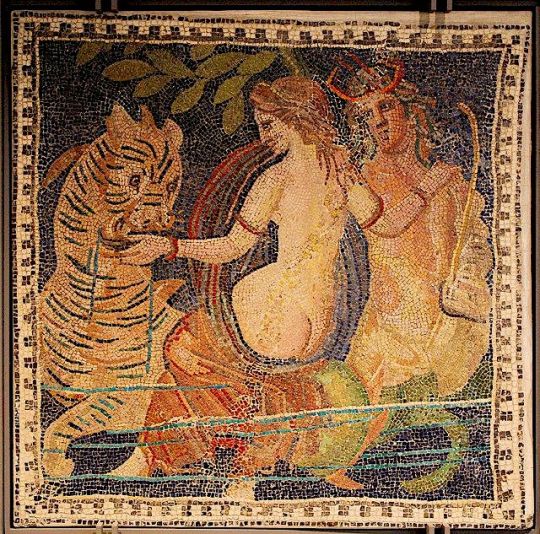
2nd century BC Roman mosaic of Triton with a Nereid and a Sea Monster (that looks like a Sea Tiger) from the Lyon Musee des Beaux Arts
https://commons.m.wikimedia.org/wiki/File:2nd_Century_BC_Ancient_Roman_mosaic_of_Triton_with_a_Nereid_and_a_Sea_Monster_(that_looks_like_a_Sea_Tiger)_from_the_Lyon_Musee_des_Beaux_Arts_(13967436178).jpg
8 notes
·
View notes
Note
Are there any Inhumans you are hoping to see in the marvel rising comic besides the already announced, Iso, reader, and Mosaic?
I’d like Ember to show up again, creating some continuity from the previous series and building off the cool character that Grayson et al had created. Plus I’d like to see Moon Girl and at least one of the Inhumans of old Attilan. I think Karnak would fit in best. His acerbic wit always plays off so well when juxtaposed to younger, more idealistic characters.
Adding in Triton or Naja, with no explanation as to how they are alive, would be a suitable response to the story of Death of The Inhumans and how it felt like a big ol’ middle finger to the fandom...
8 notes
·
View notes